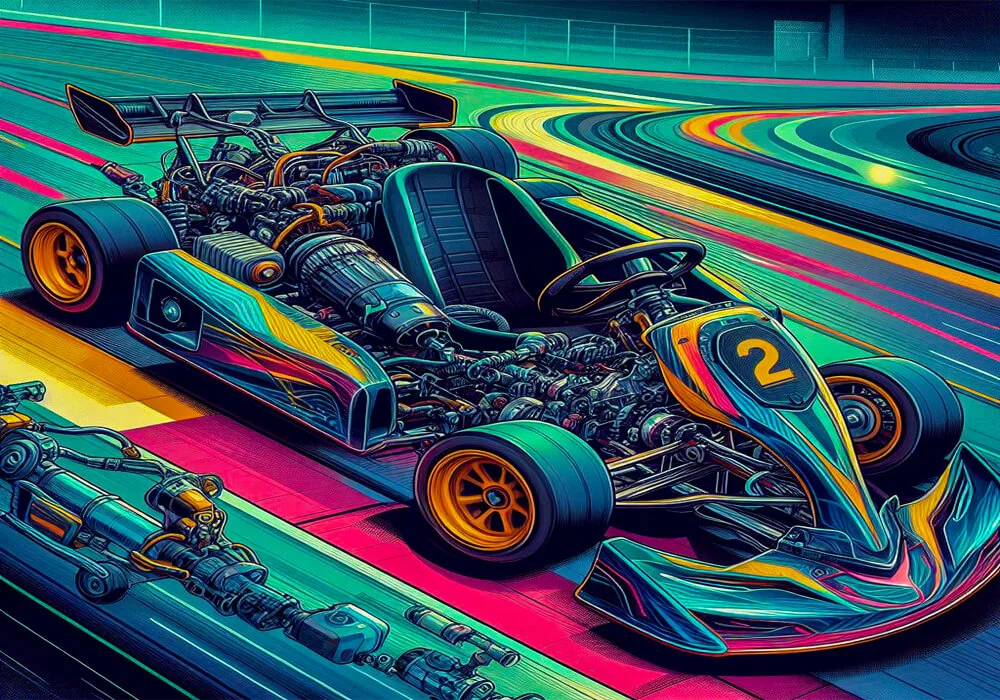Do go karts have transmissions?
When it comes to the thrilling world of go-karting, many enthusiasts wonder about the mechanics behind these nimble machines. A common question is: “Do go karts have transmissions?” Understanding the role of transmissions in go-karts is crucial for both recreational drivers and competitive racers.
This Guide delves into the types of transmissions found in go-karts, their functionality, and how they impact the driving experience.
Types of Go-Kart Transmissions

Go-karts, like other vehicles, can have different types of transmissions. The type of transmission significantly influences the driving dynamics and maintenance requirements of the kart. There are three primary types of transmissions found in go-karts:
- Direct Drives
- Automatic Transmissions
- Manual Transmissions
1. Direct Drives
Direct drive go-karts are the simplest form of go-karts. These karts do not have a traditional transmission system. Instead, the engine is directly connected to the rear axle via a chain. This setup means there are no gears to shift through, which simplifies the driving process. Direct drives are common in entry-level and rental go-karts due to their ease of use and low maintenance requirements.
2. Automatic Transmissions
Automatic transmissions in go-karts usually feature a torque converter or a centrifugal clutch. These systems handle gear shifting automatically, allowing the driver to focus solely on steering and accelerating. Automatic go-karts are ideal for beginners and casual drivers because they provide a smooth and straightforward driving experience.
How Automatic Transmissions Work
Torque Converters:
These devices use fluid coupling to transfer power from the engine to the transmission, adjusting the gear ratio automatically based on the engine speed (RPM).
Centrifugal Clutches:
These engage and disengage the engine from the drivetrain based on RPM, allowing the go-kart to idle without moving and automatically applying power as the engine speed increases.
3. Manual Transmissions
Manual transmissions, also known as shifter karts, are geared go-karts that require the driver to manually shift gears. These karts are equipped with a clutch pedal and a gear lever, similar to a motorcycle. Manual go-karts provide more control and are preferred by competitive racers for the ability to optimize performance during races.
How Manual Transmissions Work
Gear Shifting:
The driver uses a clutch pedal to disengage the engine from the transmission while shifting gears using a lever. This allows precise control over the kart’s speed and acceleration.
Driving Experience:
Manual go-karts demand a higher level of skill and coordination, offering an engaging and immersive driving experience.
Advantages and Disadvantages of Each Transmission Type
Direct Drives
Advantages:
1. Simple design with fewer components to maintain.
2. Easy to drive for beginners and casual users.
Disadvantages:
1. Limited performance capabilities compared to geared karts.
2. Less control over speed and acceleration.
Automatic Transmissions
Advantages:
1. Easy to use, making them ideal for beginners.
2. Lower risk of driver error related to gear shifting.
Disadvantages:
1. Less control for advanced drivers seeking a competitive edge.
2. Potentially higher maintenance costs due to complex components.
Manual Transmissions
Advantages:
1. Greater control over the kart’s performance.
2. Preferred choice for competitive racing.
Disadvantages:
1. More challenging to drive, requiring skill and practice.
2. Higher maintenance needs due to the complexity of the transmission system.
Choosing the Right Go-Kart for You
When deciding between automatic and manual go-karts, consider your experience level, intended use, and personal preference.
1. Beginners and Casual Drivers: Automatic go-karts are perfect for those new to the sport or those who want a hassle-free driving experience.
2. Experienced Drivers and Racers: Manual go-karts offer the control and performance needed for competitive racing and for those who enjoy the technical aspects of driving.
FAQs
What is the difference between a shifter kart and a regular go-kart?
A shifter kart has a manual transmission that allows the driver to shift gears, providing more control and flexibility. Regular go-karts, often single-speed, do not offer gear shifting capabilities.
How does a torque converter work in an automatic go-kart transmission?
A torque converter uses fluid coupling to transfer engine power to the transmission, adjusting the gear ratio automatically based on engine RPM. This allows for smooth acceleration and deceleration without manual gear changes.
Are there any specific situations where a manual transmission in a go-kart is more advantageous?
Manual transmissions are advantageous in competitive racing, where precise control over the kart’s speed and acceleration can provide a strategic edge. They also offer a more engaging driving experience for enthusiasts.
Do all go-karts come with a clutch system?
Not all go-karts have a clutch system. While most racing go-karts with manual transmissions do, many recreational and rental go-karts with automatic transmissions do not.
Conclusion
Understanding the types of transmissions in go-karts is essential for choosing the right kart for your needs. Whether you prefer the simplicity of direct drives, the ease of automatic transmissions, or the control of manual transmissions, there’s a go-kart out there that fits your driving style. Remember to consider your experience level and intended use when making your choice. Happy karting!

